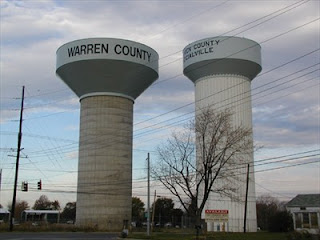Well, at least they’ve got their
fair share of crazily named towns. I had
to break this post in two. This week, A
to K. Next week, L to Z.
10. Gene AutryThis town of 100 in the south central part of the state was named for famous singer and Western movie star Tom Mix.
Tom bought a ranch nearby in 1939. The locals changed the name of their town, Berwyn, to honor him a couple of years later. Interestingly, the town had previously been called Lou and also Dresden. Here's hoping these folks have finally settled down.
Tom, wife Dale, and
horse Silver
(not necessarily in that order)
(not necessarily in that order)
I think I just like saying this one (though chances are pretty good I’m pronouncing it incorrectly).
It’s from the Muskogee (Creek) and means “big deer.” And that’s – interestingly – the phrase they used for “horse.”
Chilocco Agricultural
Indian School basketball team, 1909
(and, yes, those are swastikas)
8. Bluejacket
Personally, I would much prefer Blueblazer … But, hey, who asked me?
The name comes from one Charles
Bluejacket, Shawnee chief and first postmaster.
The town is in the far
northeast of the state, and has 340 people.
Owen Cash, founder of the Society for the Preservation and Encouragement
of Barber Shop Quartet Singing in America (SPEBSQSA for short) is a native son.7. Broken Bow / Broken Arrow
Would you kids stop touching everything! Put that down! Right now!
Broken Bow is named after Broken Bow, KS, where the town’s founders were from. The OK version is in the far southeast corner of its state, and has 4,100 people. It’s the nearest town to the wonderfully named Beaver Bend State Park. The local high school team goes by the extremely politically incorrect nickname of the Savages.
Cement factory? Nearby clay mines? We may never know.
I do know, though, that it’s a lot better than what the Comanche called it, Toyanarimii. In case your Comanche’s a little rusty, that means "rock town."
Google results include some wonderful combinations, such as the Cement Bulldogs (the local high school team), Cement News, Cement Weather, Cement Car Insurance, Cement Counselors, Cement Jobs, Cement Municipal Court, and Cement Houses for Sale.
5. Corn
So, you think they grow corn around here?
Actually, this place was originally called Korn. So I’m guessing it was really named after the band.
Corn and Cement are actually rather alike. The towns, I mean. They’re both in the same part of OK, and Corn’s got about 500 people to Cement’s 530. There are also plenty of odd Google links for “Corn OK” as well – though my favorite is probably the “related search,” “Is corn OK for dogs?”
4. Frogville
So, you think they got a lotta frogs around here?
As a matter of fact, they do! Wikiepedia says that the place “was named for the abundance of frogs in the area said to be so large they ate young ducks.”
I wasn’t able to find much on the town, though I did find a review for a play called So My Son Married His Boyfriend in Frogville Oklahoma.
adj. bat·ti·er, bat·ti·est. Slang. Crazy; insane. [From “bats in the belfry”].
It’s actually from the honorable Byington Battiest, a Choctaw judge. Further, my guess is it’s pronounced with just two syllables – like “ba-teest.”
However it may be pronounced, it’s got 250 people and is in the southeast part of the state (not that far from Beaver Bend State Park, by the way).
No, this town’s name is not a celebration of the medical
condition known as genu varum. It’s
named after somebody with the last name of Bowlegs. There’s a little controversy about who that might
actually be:
- Billy Bowlegs, a famous Seminole chief
- Lulu Bowlegs, his descendent, on whose land oil was discovered here
- David Bowlegs, who got murdered here
Bowlegs the town has about 370 people. Wikipedia says it’s a bedroom community, but it
appears to be in the middle of nowhere, with the nearest city (Oklahoma City)
more than an hour away.
1. Gay / Straight
Take your pick.
Well, it looks like I could definitely find some Straight Oklahomans. I’m not so sure about the Gay ones though. Here, let me explain ...
As for “Gay OK” … Well, I did get plenty of hits. They just weren’t what I was expecting.
Honorable Mention:
- B-o-r-i-n-g – Green
Pasture, Grove (world’s largest fishing pole), Countyline,
Centralia, Center
- Short and sweet – Dow,
Fay, Jay, Joy, Ada, Eva, Eucha, Enid, Eram, Gans, Foss, Babbs, Box, Bee,
Kaw
- Just a little out of
place – Kansas, Camp Houston, Fargo, Canton, Cleveland, Albany, Dover, Chattanooga,
Helena, Cheyenne, Billings, Boise City, El Reno, Burbank, Berlin, Kremlin,
Cairo, Delhi, Bengal
- Just a little
off-color – Hooker, Beaver (Cow Chip Throwing Capital of the World),
Cox City
- Numerically oriented –
Four Corners, Carter Nine
- Orthographically challenged
– Cogar, Chewey, Grainola, Bacone, Brooken
- Atypical adjectives – Hardy,
Blue, Brown, Golden, Gray, Cloudy, Canadian, Jumbo, Hollow, Greasy, Kenefic
- Abnormal nouns – Friendship,
Fame, Enterprise, Colony, Cache, Driftwood, Daisy, Apple, Antlers, Buffalo,
Bison, Elk City (National Route 66 Museum), Gray Horse, Herd, Kingfisher,
Carrier, Blocker, Bunch, Bromide, Bushyhead, Hominy, Hydro, Happyland, Jet,
Jester
- Unconventional verbs –
Felt, Bond, Bray
- Fun to say – Harjo, Depew,
Felker, Krebs, Eakly, Andarko, Eufaula, Inola, Binger, Belzoni
- Homa, homa, homa – Indiahoma,
Centrahoma
- Just plain weird – Ft.
Supply, Empire City, Dill City, Big Cabin, Burns Flat, Cloud Chief, Jollyville,
Hockerville, Cookietown, Hicks Addition
- I’d like to introduce
you to – Katie, Gerty, Bessie, Bernice (formerly Needmore), Idabell, Amber,
Krystal, Hugo (Circus Town USA), Homer, Calvin, Canute, Geronimo,
Cleo Springs, Devo
- Ghost towns – Acme,
Grand, Gate, Eddy, Bathsheba, Indianapolis, Hext, Hochatown, America,
Creek Agency, Cheek, Karma, Beer City




































